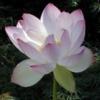Hello,
Food for thought,
consider the possibility that the noticeable dip near the hamachi on the upper edge may be there from a previous single chip taken out (and not from many polishes). The polisher may have decided to remove the damage while leaving as much metal as possible, thus creating a bit of curvature in the edge. Whether the result is correct/acceptable is open to question.
When considering a piece like this, consulting with an excellent polisher over the present condition and possibilities of improvement is advisable. Although there are certain physical limits for sure, an excellent polisher will often surprise with what can be accomplished.
This tanto could be enjoyed as is, but that should be weighed vs price and resell time, if need be. Especially with older pieces like this one which have seen previous polishes, those polishes, changes, should be carefully evaluated. Some problems extending from previous polishes can be corrected, while others cannot. This applies to the nakago as well.






